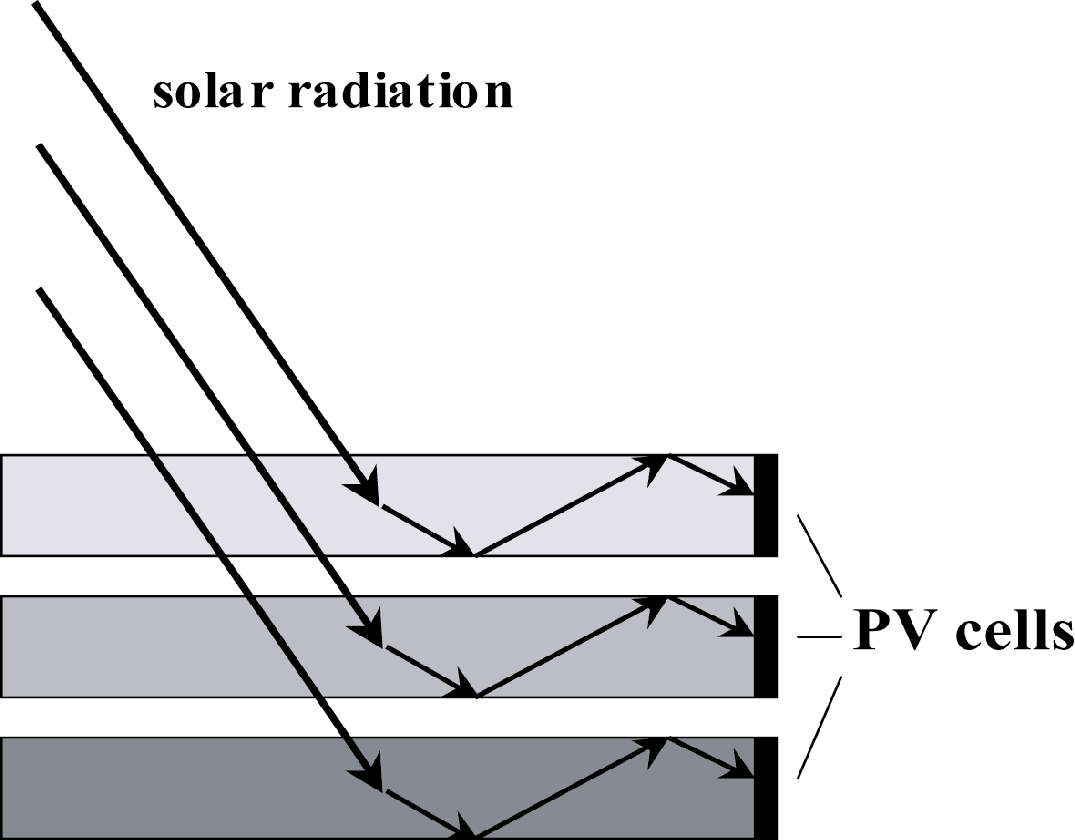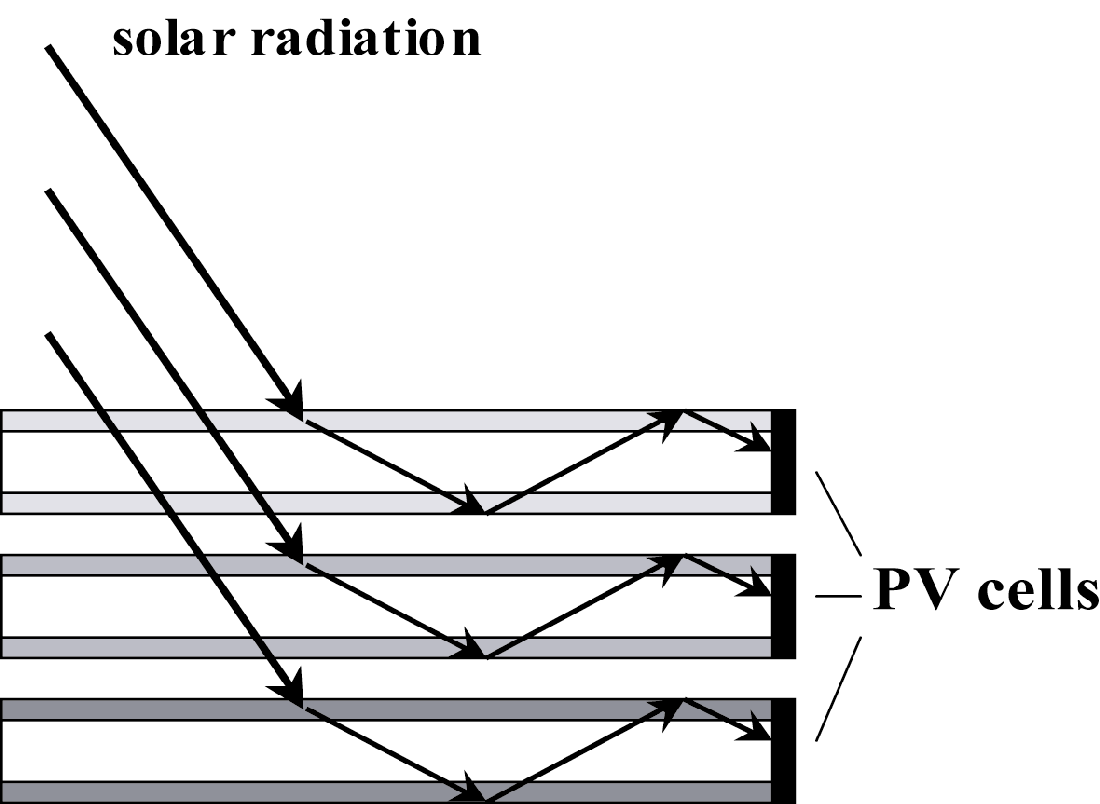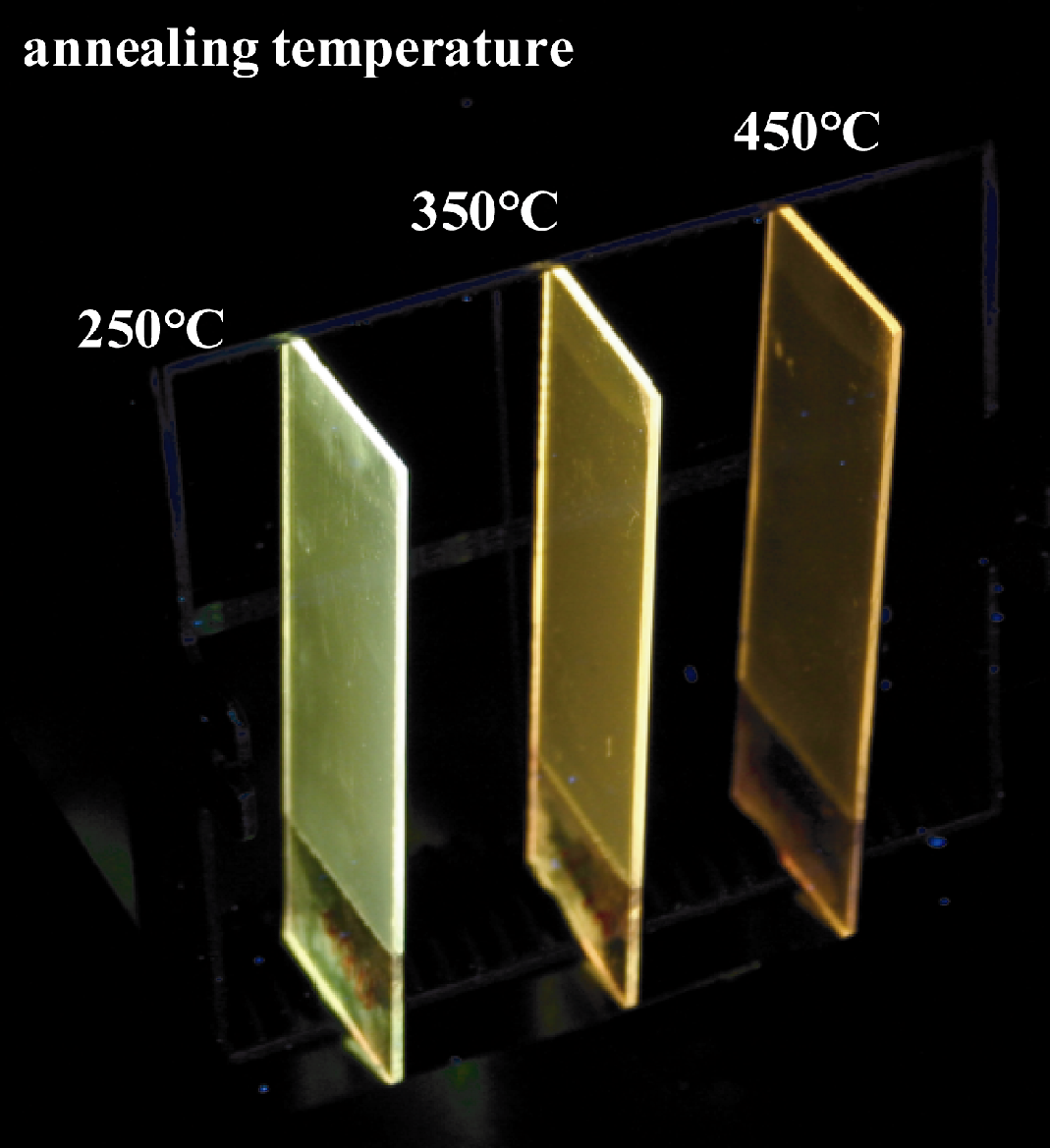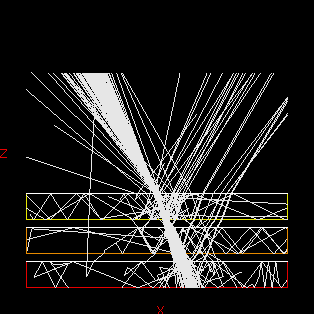Contact: Andreas Schueler
Concentration of solar radiation is an effective way to reduce cost in solar electricity generation. While direct sunlight can be concentrated easily by mirrors in solar power plants located in sunny countries, there are not many options to concentrate diffuse solar radiation, the latter occurring frequently in central European latitudes. According to the optical Liouville theorem, conservation of phase-space volume or optical etendue leads to strict limits to concentration in geometrical optics [1]. In classical statistical physics, entropy is shown to have a logarithmic dependence on phase-space. The optical etendue is a quantity closely related to phase-space. By using a Stokes shift in the optical medium, we can trade-off the etendue with heat delivered to the ambient resulting in an exponential boost in brightness. This is turn can deliver an exponential boost in concentrated flux. A recent innovation is the use of quantum dots for accomplishing the Stokes shift.
Likewise, quantum dot photoluminescent concentrators for photovoltaic solar energy conversion allow to concentrate not only direct but also diffuse solar radiation to a considerable extend. A schematic drawing of this principle is shown in Fig.6a). Hereby the energy collected on a large surface can be concentrated on a relatively small area of photovoltaic cells located at the edge of a fluorescent glass pane. Instead of immersing quantum dots in transparent resins, we propose to deposit quantum dot containing silicon dioxide films on highly transparent low iron glass substrates by sol-gel dip-coating. Unlike the organic dyes, quantum dots have the advantage of not being sensible to UV radiation and offer durable performance.
A computer code for ray tracing simulations of quantum dot solar concentrators has been developed at LESO-PB on the basis of Monte Carlo methods. Random events model the wavelength dependent behaviour for polarization dependent reflection/transmission at interfaces, photon absorption by the semiconductor nanocrystals and photoluminescent reemission.
Award
ABB Innovation Award 2007, Andre Kostro, Photonsim: development of a Monte Carlo ray tracing software for the simulation of photoluminescent solar concentrators, Master’s thesis supervised by A. Schüler
Publications
A. Schueler, A. Kostro, B. Huriet, C. Galande and J.-L. Scartezzini. Monte Carlo simulations of quantum dot solar concentrators: ray tracing based on fluorescence mapping. SPIE, Optics and Photonics 2008, San Diego, 2008.
A. Schueler, A. Kostro, C. Galande, del Olmo and M. Valle et al. Principles of Monte-Carlo ray-tracing simulations of quantum dot solar concentrators. Solar World Congress of the International-Solar-Energy-Society, Beijing, PEOPLES R CHINA, 2007.
A. Schueler, M. Python, M. Valle del Olmo and E. de Chambrier. Quantum dot containing nanocomposite thin films for photoluminescent solar concentrators, in Solar Energy, vol. 81, num. 9, p. 1159-1165, 2007.


Fig.1: (a) Quantum dots immersed in bulk of panes (b) Quantum dots contained within coatings deposited on the surfaces (b). (Illustration from Goetzberger A., Greube W., Solar energy conversion with fluorescent collectors, Applied Physics 14 (2), pp.123-139).


Fig. 2: (left) Photograph of CdS nanocrystal containing SiO2 coatings on glass; samples were annealed at 250°C, 350°C, and 450°C [3]. (right) Visualization of three-dimensional photon trajectories in a triple stack quantum dot concentrator [4].